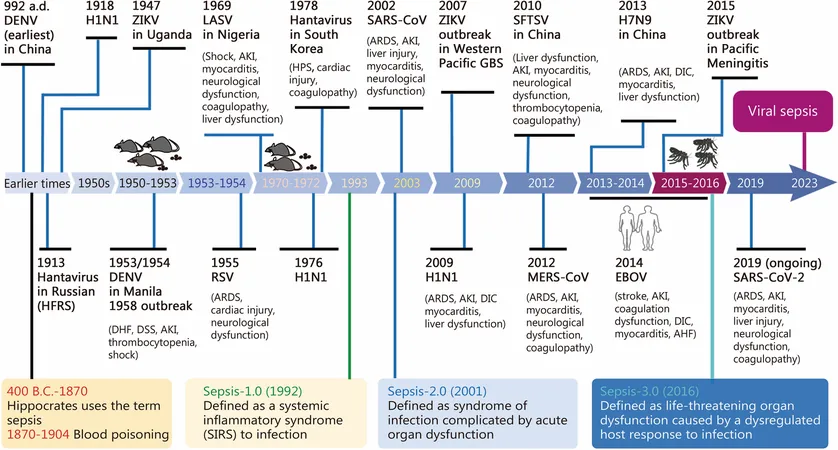
New Hope on the Horizon: FDA Approves Dual Drugs for Rare Niemann-Pick Type C Disease
2024-12-20
Author: Yu
Introduction
Niemann-Pick disease type C (NPC) is a devastating, rare neurodegenerative disorder primarily affecting children. As it progresses, it severely hampers their ability to swallow, speak, move, and even think, often leading to life-altering consequences. However, recent developments from the Food and Drug Administration (FDA) have brought new hope to families grappling with this challenging condition. For the first time, the FDA has approved two drugs specifically for NPC, marking a significant breakthrough in treatment options.
Understanding Niemann-Pick Type C Disease
NPC is caused by mutations in either the NPC1 or NPC2 genes, which play a critical role in the transport of cholesterol and other lipids within cells. These genetic defects lead to lipid accumulation in various organs, particularly in the brain, liver, and spleen, significantly impacting a child’s life expectancy, which averages around just 13 years.
Limited Treatment Options
Historically, treatment options for NPC have been scarce. The only previously available medication was miglustat, a drug initially developed for Gaucher's disease, which merely slowed deterioration but did not offer genuine symptom improvement.
The New Hope: Miplyffa and Aqneursa
The newly approved medications, Miplyffa and Aqneursa, have sparked considerable excitement among researchers, healthcare providers, and families alike. Miplyffa enhances the function of lysosomes, enabling better clearance of the accumulated lipids. It has been approved for use in combination with miglustat, which may lead to more comprehensive care. Aqneursa, on the other hand, is a modified amino acid that penetrates the blood-brain barrier, and it’s thought to restore mitochondrial function, which can be disrupted by lipid buildup.
Clinical Trial Results
Clinical trials involving 110 participants introduced a glimmer of hope. Results indicated that Miplyffa effectively slowed progression in speech, swallowing, and fine motor skills, while patients taking Aqneursa saw improvements in gait, sitting stability, and speech skills compared to a placebo group. Although there were no significant side effects reported during trials, ongoing monitoring will focus on potential impacts on kidney and liver function to ensure safety.
Challenges in Researching NPC
Despite the promise these treatments hold, the lack of extensive research on their combined use poses questions for healthcare providers. Natasha Shur, a geneticist from Children’s National Hospital, encourages the integration of multiple therapies, especially in instances where single-agent treatments have not been overwhelmingly effective. This holistic approach echoes strategies being employed across various rare diseases.
Community Advocacy and Future Implications
The advancements in NPC treatment also underscore the importance of community advocacy. The collective efforts of NPC families, patients, and dedicated groups have fueled research and development, demonstrating how grassroots movements can drive medical breakthroughs. Shur emphasizes that successfully addressing NPC can pave the way for more options for other rare diseases, highlighting a potential ripple effect for future treatments.
Looking Ahead: Broader Applications
Furthermore, insights from NPC research might extend beyond rare diseases and offer valuable clues for tackling more common neurological conditions like Alzheimer's disease. Given the similar pathological features, therapies discovered for NPC may indeed hold promise in repurposing for wider applications.
Conclusion
Ultimately, patients, families, and medical professionals share a hopeful outlook on these FDA-approved drugs. As Shur poignantly states, “Every day matters for these beautiful kids.” With research continuing to evolve, the fight against Niemann-Pick type C illuminates a path of resilience and determination in the face of adversity.


 Brasil (PT)
Brasil (PT)
 Canada (EN)
Canada (EN)
 Chile (ES)
Chile (ES)
 España (ES)
España (ES)
 France (FR)
France (FR)
 Hong Kong (EN)
Hong Kong (EN)
 Italia (IT)
Italia (IT)
 日本 (JA)
日本 (JA)
 Magyarország (HU)
Magyarország (HU)
 Norge (NO)
Norge (NO)
 Polska (PL)
Polska (PL)
 Schweiz (DE)
Schweiz (DE)
 Singapore (EN)
Singapore (EN)
 Sverige (SV)
Sverige (SV)
 Suomi (FI)
Suomi (FI)
 Türkiye (TR)
Türkiye (TR)